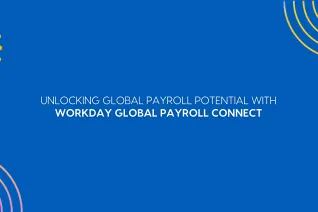What your Employee’s Christmas Wishlist looks like

Admit it. Christmas, this year, is going to be phenomenally different. The year that gave us several jolts (and opportunities to improvise, as well) is nearing its end, as we get ourselves ready for the holiday season.
Kids love writing notes and making their Christmas wishlist, hoping that Santa takes heed. The joy that kids express upon seeing their gift under the Christmas tree pretty much sets the tone for the day in any household. While kids could wish for gadgets and toys, we took a pause to ask – What would an employee’s wishlist look like? While employees strived hard to stay productive this year to keep their organizations running, what most employees ask in return might include, appropriate responses to their HR queries, timely payroll, adequate HR technology to support workforce management and a robust rewards & recognition program that reflects their performance in the organization. Here is a short list of things companies could gift their employees in order to offer a stellar employee experience.
1. A ‘feel-good’ employee technology experience
Digital employee experience was a top priority to several organizations well before COVID-19 hit the global business landscape. But the pandemic made it a must-have business imperative. Today, we can say that the acceleration is real. Global employers are taking plenty of steps to ensure their entire workforce is equipped with enough digital arsenal to establish productivity irrespective of its location.
Apps, devices, and networks that underperform sluggishly, possibly due to poor design, can create an unimaginable impact on the employee technology experience. The result – suboptimal employee productivity. Employees expect their organizations to offer processes and tools that monitor and manage employee technology experience holistically. Hence, infrastructure and operations leaders need to take a look at this area through a new lens.
HR and IT teams should partner with each other and work hand-in-hand not only to listen to and understand employees’ tech needs but also to tackle employee tech experience challenges.
Also read: Top 3 focus areas for CHROs to bolster Employee Engagement amid a Global Pandemic
2. Making employees smile with employee appreciation programs
As the global workforce continues to work out of a virtual environment, rewards, compliments, and appreciation become trickier and more important. Timely rewards and recognition can make employees feel more connected as well as motivated. Furthermore, a solid employee appreciation program will foster the development of a healthy workplace culture that would cultivate exceedingly productive employees.
Automated employee performance management solutions and appreciation program software that measure qualitative as well as quantitative employee metrics, are the need of the hour. Employers should make ample use of these behavior-driven platforms to keep their employees motivated, satisfied, and goal-driven.
3. Creating a ‘safe and sound’ workplace
Workplace safety is a key concept that can never be overlooked. In light of the global pandemic, it has gotten into everlasting limelight. Improving workplace safety has taken a different turn today. It is the responsibility of an employer to actively monitor and test each employee at their premises and conduct safety meetings with the staff, thereby creating a safe work environment.
Maintaining complete safety at work is possible only if employees are educated about the rules. Employers should consider implementing robust employee training programs that highlight the importance of reporting unsafe conditions at work, adhering to the latest safety procedures, following emergency protocols, and taking regular breaks at work.
4. A tick in the box for paid time off
Paid time off can have a significant impact on employee productivity. They not only offer the most valuable commodity – time to employees but also stimulate the feeling that they are being cared for. When it comes to paid sick leaves, allowing sick employees to take their time off protects the wellbeing of other employees too, while preventing the spread of contagious diseases. Ensuring they get paid paves the way for the financial wellbeing of employees and, ultimately, high employee retention.
Employers are looking at these ‘paid time off’ days, also termed as recharge days, as a feasible way to offer their employees additional time away from work to support their wellbeing and mental health.
As you are reading this, you might imagine how a year back, we were all sitting at our cubicles, oblivious to what a global lockdown would look like. In retrospect, we are all at our couches today, having witnessed a complete transformation in the way we conduct our work– so have employees’ expectations. Employers who listen to their employees and understand their needs would thrive not only in the coming new year, but throughout.
With that, here’s your virtual Santa wishing you a wonderful Christmas!
To know more about the knacks of offering the best employee experience to your workforce, get in touch with us. Our EX-experts will assist you
Latest Resources
Stay informed with latest updates
If you're curious and have a thirst for knowledge pertaining to the HR, payroll, and EOR universe, don't miss out on subscribing to our resources.















